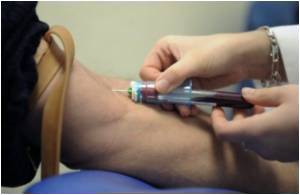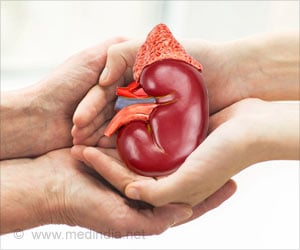A simple, inexpensive blood test could soon help doctors halt organ rejection before it impairs transplanted hearts and kidneys.

Butte and his collaborators have made a big step toward that goal. The Stanford team found three easily measured proteins that rise in the blood during acute rejection, in which a patient's immune system attacks his or her transplanted organ. The research, which will be published online Sept. 23 in PLoS-Computational Biology, is the first-ever report of an immune-rejection signal that is shared by two kinds of transplanted organs. The protein signals are now being validated in liver- and lung-transplant recipients as well.
The new blood test circumvents the invasive, expensive, slow system now used to keep tabs on transplants. Currently, all organ recipients receive functional monitoring of their new body parts. Heart transplant patients get regular echocardiograms, for instance. If organ function drops, doctors cut a tiny sample from the transplanted tissue to check for rejection, and then adjust patients' immune-suppressing drugs accordingly. About 25 percent of kidney recipients and 40 percent of heart recipients experience an episode of acute rejection in the first year after transplant.
The new blood test will let doctors skip directly to drug dosing before a transplant is damaged. As well as treating rejection early, doctors could use the test to reduce doses of immune-suppressing drugs for patients whose bodies are handling their transplanted organs well, thus reducing unnecessary drug side effects. Butte predicts the test will be commercially available in three to five years.
The new technique makes use of an existing method to detect proteins in blood, called enzyme-linked immunosorbent assay, or ELISA, that is already used to diagnose diseases such as strep throat. The Stanford team found new proteins for diagnostic ELISA kits to target.
To identify the new protein markers, the researchers started from publicly available data documenting changes during transplant rejection in levels of messenger RNA, the molecule that tells cells to make new proteins from the instructions in the genetic code. These changes gave the team clues about which proteins might appear in the blood during rejection.
From 45 protein candidates identified via mRNA data, the team zeroed in on 10 for which ELISA-based laboratory test kits were already available. Using blood samples from 39 kidney and 63 heart transplant recipients, the kits found three proteins that reliably increased in the blood during acute rejection.
Because ELISA-based diagnostics are already used in clinical settings, it won't be hard to modify the technology for transplant patients, Butte said. Stanford University has filed patent applications for the new test.
The researchers also independently validated their method of using public RNA data to identify marker proteins by confirming that the computational method detected known biomarkers for several other diseases. The new discovery method is exciting, Butte said, because it could be applied to many diseases that lack good diagnostic tools.
"For a disease like pancreatic cancer, where we find it late and patients die quickly, we have a huge medical need for identifying good diagnostic markers," he said. "Why don't we use public data to help us with this process?"
Source-Eurekalert












